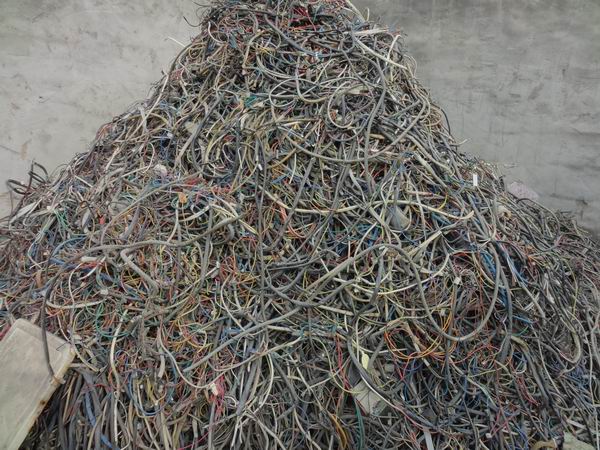The solution volume measurement technology is an important foundation work in all hydrometallurgical. The amount of solution between the various processes in the heap leaching process, as well as its accuracy, is not only a direct basis for controlling water balance in heap leaching, but also affects the calculation of metal balance in the process. In dry, water-deficient areas, water balance is an important factor in heap leaching production. Therefore, the correct measurement of the solution volume must be emphasized. There are many methods for measuring the volume of a solution. Two methods are often used in heap leaching, and the results measured by the two measurement methods are checked against each other. First, the flow meter measurement method The most common practice is to install a metered flow meter at the outlet of the pumping equipment or at the inlet of the solution handling equipment. Some of these flow meters are used to measure cumulative quantities, such as water meters; some are used to measure instantaneous flow, such as rotameters. It is currently difficult to find a cheaper instrument that can characterize both instantaneous flow and cumulative flow. When using a rotor flow meter, an electric remote flow meter, a plate type flow meter, etc. to measure the instantaneous flow rate, a steady pressure tank must be used to supply the liquid. Otherwise, the solution measurement may be inaccurate. At present, stainless steel water meters are often used in gold mine heap leaching. Because cyanide will corrode copper and zinc metal parts, ordinary household water meters should not be used. In the uranium heap leaching, cumulative flow meters are rarely used. Most of them use flowmeters. Because uranium ore heap leaching is mostly carried out in acidic medium, and chloride is usually used as eluent, copper, zinc and stainless steel parts are accumulated. The meter should not be used. The solution in the heap leaching process is a clear liquid, and the solid content is generally less than 5×10 -5 ; in general, the fine particles in the heap leaching solution do not affect the accuracy of the solution measurement. However, it must be pointed out that heap leaching is carried out in the open air. Some impurities such as leaves and grass roots often fall into the solution pool. When the solution is transported, these impurities may block the flow meter, causing measurement errors and even serious errors. 2. Measurement of structures using the heap leaching field Compared with other hydrometallurgy, the solution metering of the heap leaching field has a unique condition, that is, various structures such as a rich liquid pool are arranged in the heap immersion field. These structures should be considered during design and construction, both as a means of storing the solution and as a container for solution metering. Although these structures are not capable of instantaneous metering of solutions like flow meters, they are convenient for use as a cumulative metering of solutions over time intervals. Since heap leaching is an intermittent operation, the structure is used to accumulate the solution, and its accurate performance meets the needs of heap leaching production. The general practice is: when designing and constructing the structure, according to the volume of the structure, and using the flow meter that has been detected by the metrology department to calibrate, along the longitudinal direction of the structure, from bottom to top, accurately scale the volume of the solution represented by the different heights. value. The distance between the minimum scales should meet the need for solution measurement accuracy in heap leaching production. For example, if the volume of a tail tank is 100m 3 and the height is 5m, if the required measurement error is ±1%, then the distance between the minimum scale lines should be 5cm; if the required measurement error is ±2%, then the distance between the minimum scale lines It should be 10cm. In order to make the heap leaching production go smoothly, the rich liquid pool and the tail liquid pool are generally more than two. They are used as solution storage equipment in the production process, and they are used interchangeably as a solution metering container, which not only does not affect the production function, but also complements each other. The tail liquid pool in the gold heap leaching is now taken as an example. There are two 100m 3 tail liquid pools of A and B. When the tail liquid from the activated carbon adsorption tower flows into the A pool, the tail liquid turns into the B pool when it reaches 100m 3 ; at this time, the A pool is sampled to determine the sodium cyanide concentration. Add sodium cyanide as appropriate, and adjust the pH value, then spray the heap as a leaching solution, stop spraying when the volume of the solution in the pool remains to 10m 3; when the volume of the tail liquid flowing into the B pool reaches 100m 3 , the tail liquid Then transferred to the A pool. This cycle alternates until the end of the leaching cycle. In dry and rain-stricken areas, fresh tap water should be added to prepare the leaching solution, usually after the tailing pond is metered. In the rainy area, the excess circulating solution is also measured after the tail liquid is discharged before entering the sewage treatment facility. .
Mechanical Recycling,Preventing Air Pollution.
Wire Grinding Machine Copper Wire Granulator, Magnetic Separators, Cable Conveyor TAIZHOU GUANGLONG WIRE STRIPPING MACHINE MANUFACTURING CO.,LTD , https://www.scrap-wire-stripper.com
Scrap copper cable wire stripping machine is used as the peeler on the rubber covered
or PVC covered copper cable wire to take over of the insulation,
let copper core separated from rubber or PVC insulation.
Different sizes cable wire are available.
Mechanical Recycling Machine eliminates the need for wire to be burned,
making the recycling of electrical wire safe for you and our environment.
Method for measuring solution volume